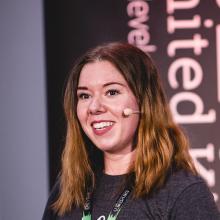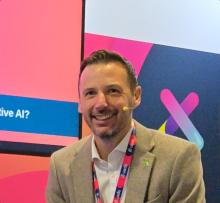Summary
Disclaimer: This summary has been generated by AI. It is experimental, and feedback is welcomed. Please reach out to info@qconlondon.com with any comments or concerns.
The presentation titled "The Friction Fix: Building Collaborative Relationships Between Teams" explores strategies to reduce friction between product and technology teams, delivered by Cat Morris and Diana Montalion.
Key Points Discussed:
- Systemic Nature of Friction: Friction is systemic, with no single cause. Understanding the system holistically is crucial.
- Focus Areas: Six primary areas were highlighted to mitigate friction:
- Understanding the system.
- Designing knowledge flow.
- Becoming learning-driven.
- Architecting relationships.
- Focusing on goals.
- Cultivating a growth mindset.
- Challenges in Transformation: Transformation initiatives often fall into patterns of blame and recurring systemic issues which hinder change efforts. Identifying leverage points is essential for meaningful change.
- Collaborative Strategies: Creating stealth allies and forming communication groups to share knowledge can lead to better recommendations and foster relationships.
- Outcome Focused Goals: Emphasizing specific, measurable outcomes over mere outputs was suggested for better alignment and success.
- Growth vs. Fixed Mindset: Highlighted the importance of a growth mindset to embrace learning and adapt to systemic changes effectively.
The session encouraged a deep dive into organizational systems to find leverage points, emphasizing the art and science of systems architecture in creating synergies between different teams for greater success.
This is the end of the AI-generated content.
Abstract
In today's fast-paced and interconnected world, the friction between product and technology teams often feels inevitable. Misaligned mindsets, priorities, and contextual biases create obstacles that slow progress, stifle innovation, breed frustration and encourage blame.
Instead of fostering collaboration, we resort to tighter controls and increased separation, widening the gap even further. However, effective collaboration is crucial for delivering impactful results and driving success.
Diana Montalion (systems architect) and Cat Morris (product manager) will examine the distinct yet interconnected concerns of product and architecture, unraveling why friction arises and how it can be mitigated. Drawing from 30+ years of combined real-world experience, they will show how the flow of data and information—when presented in the right way and context—can bridge gaps and generate shared knowledge.
Attendees will gain practical strategies for designing systems and processes that enable knowledge flow. Empowering teams to make informed decisions and deliver impactful outcomes. Together.
Interview:
What's the focus of your work these days?
Diana: Designing relationship patterns in software systems and the people who build them.
What's the motivation for your talk at QCon London 2025?
Diana: Pain. Years and years of painful gaps in thinking and decision making.
How would you describe your main persona and target audience for this session?
Diana: Software professionals who need to think with other software professionals. (Especially those whose work needs cross-functional perspectives to deliver value. Which, I would argue, is everyone.)
Is there anything specific that you'd like people to walk away with after watching your session?
Diana: Designing knowledge flow will improve your work life remarkably.
Speaker

Cat Morris
Staff Product Manager @Syntasso, Previously Platform and Enterprise Modernization Specialist @ThoughtWorks
Cat is the Product Manager at Syntasso delivering Kratix, an open-source cloud-native framework for building internal platforms. She has worked in tech for over 10 years, the last 6 have been in Platform Engineering across all kinds of domains. She specialises in bringing Product Mindset to technical teams that serve developers and other internal users - their user experience matters too!
Away from her work endeavours, Cat is an avid plant enthusiast with dozens of houseplants. She also shares her home with Opal, her equally adored and occasionally demanding feline companion.
Find Cat Morris at:
Speaker

Diana Montalion
Founder @Mentrix Group, Systems Architect, and Author of "Learning Systems Thinking"
Diana and her teammates build modern software systems for diverse clients. She has 20+ years experience engineering and architecting software systems for organizations including Stanford, The Gates Foundation, Memorial Sloan Kettering and Teach For All. She has also served as Principal Systems Architect for The Economist and The Wikimedia Foundation.
She wrote the O’Reilly book, Learning Systems Thinking: Essential Nonlinear Skills & Practices for Software Professionals. Her company, Mentrix, publishes courses and learning materials for aspiring nonlinear thinkers.
Diana lives in the Hudson Valley (New York, USA) with three dogs, one cat and nine chickens.








